Killifish are one of the most beautiful fishes on the planet. People often refer Nothobranchius rachovii as the most beautiful freshwater species in the world. In my recent collection trip to Peru, I collected some annual and non annual killifish like Rivulus christinae and Moema quiii. They all were astonishingly stunning.
When my pair of Aphyosemion splendopleure bred, I had enough fry to work with and I decided to trade my adult pair for some other nice and colorful killiifish. After a few hours of posting them for trade on a local forum, I got a reply from a fellow hobbyist. She was willing to trade her pair of Aphyosemion striatum. A quick Google search revealed the beauty of this killifish. We exchanged our pairs on the next weekend.
I had put the pair in an old 10 gallon tank which has many many scratches. I kept feeding them and doing water changes in their tank but I could never enjoy their real beauty through that scratched tank until recently when I moved them to a new tank. I was in awe of the beauty of this killifish. Male has vibrant yellow, red and green colors on his boody. Female is almost white in color.
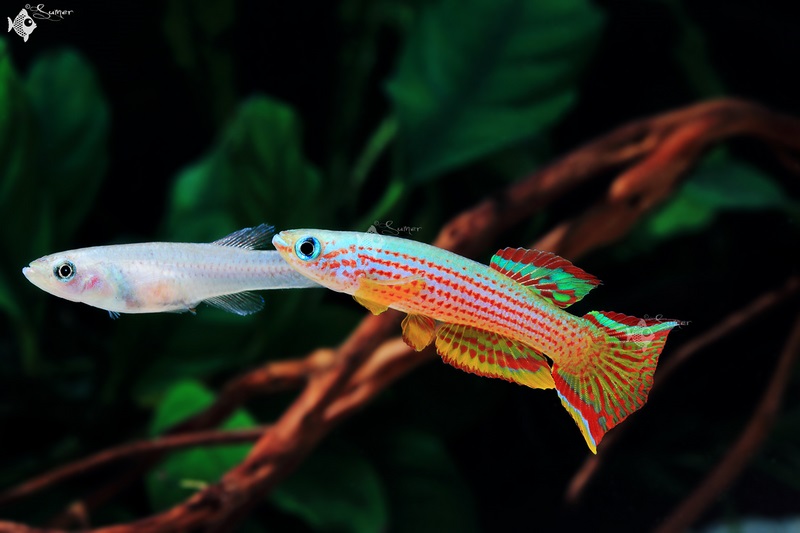
Aphyosemion striatum male trying to impress female with his fins all open. This is a common sight after a 50% water change.
Aphyosemion striatum is very easy to breed. They spawned in that 10G tank but later I found that the fry were eaten by the parents. A little more attention and some more plants in the tank will definitely help fry to survive. It is species like this which train the beginner hobbyists before they try their hands on more demanding fishes. Prolific killifish like this give a beginner hobbyist the confidence to try to keep more demanding species.
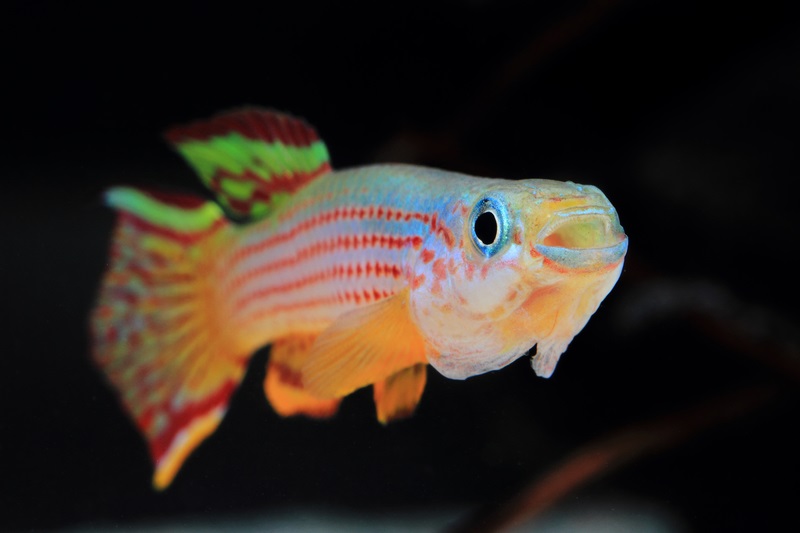
Aphyosemion striatum male yawning. What I call yawning actually is a like a “stretch” of muscles in the mouth.
What kind of killifish do you keep? If not, which killifish would you like to keep in fututre? Let me know in the comments below.
-Sumer

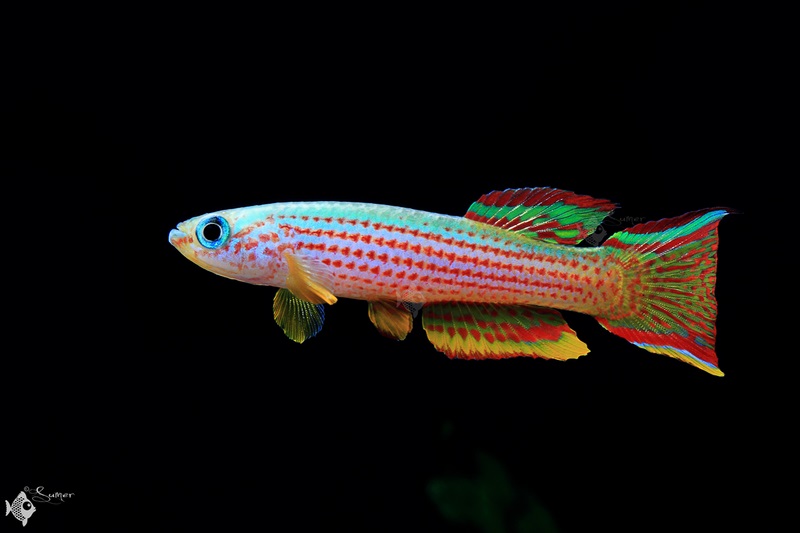
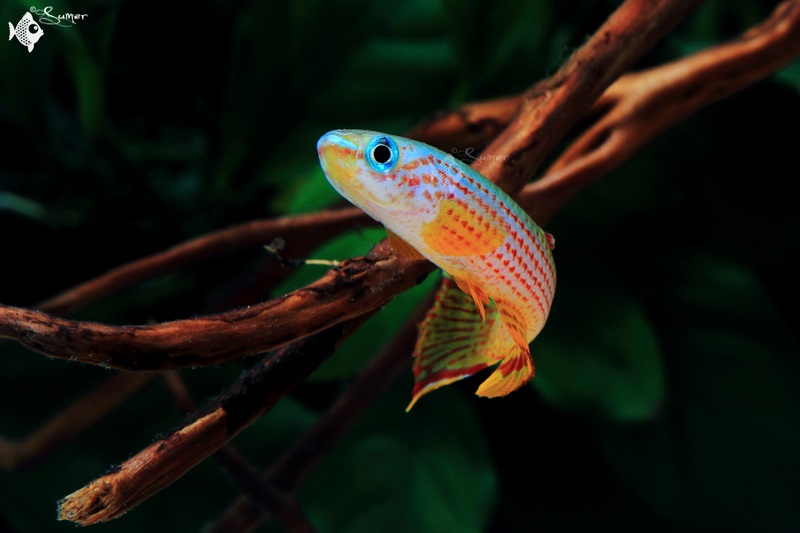
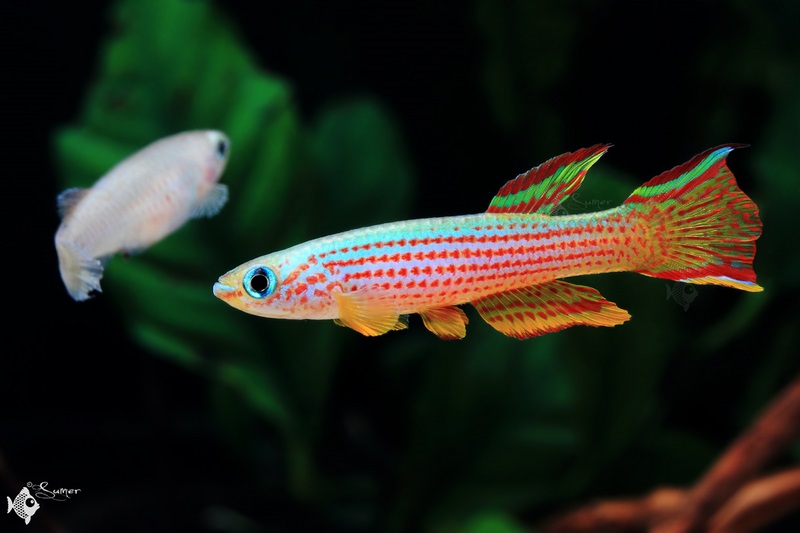
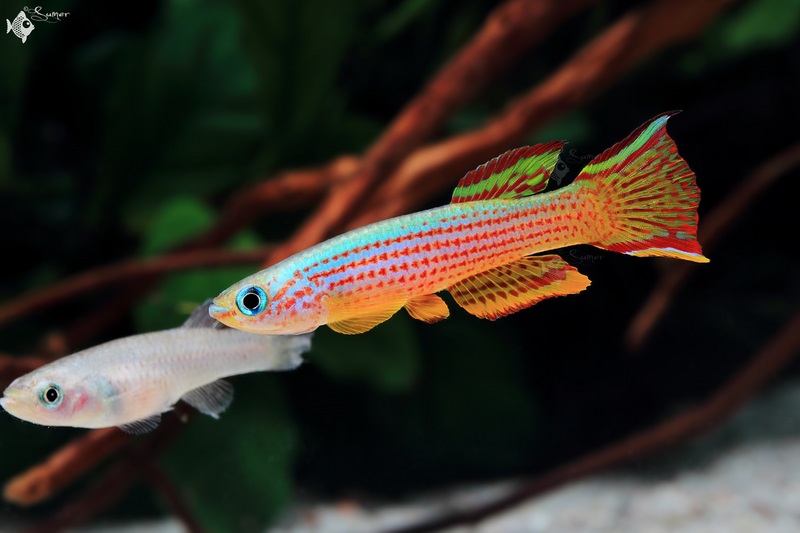





hi saw your piece on striatum i have one male lost two pairs just after i recieved them from a friend the reson i lost them was due to transport problems at the moment i am breeding blue gularis biv mile 8 gard gold biv laos red nsukka gardenri scheeli ameti i am always looking for killies as i live to far from the city to find any where i live hope this helps you gary
Thanks for your message Gary. Blue gularis are one of my most favorite killifish. I am glad you are getting success with them.
Hi,
I have Orange Australe Killifish. I ordered them about 3 months ago now, and just last week I noticed I have a single fry hiding out in the tank. I haven’t seen him yet this week, i hope he didn’t get eaten. I do have floating plants where it hides in the roots and some java moss. Should I be trying to feed it something specific? It did look like it was eating some fuzz growing on my driftwood.
Here is the fry: http://imgur.com/ePcRXji
Here are the parents: http://imgur.com/a/VnZct
I have them in a 5.4 gallon. They seem to be happy in there, but do you think I should upgrade to a larger tank?
Jeff
Hi Jeff,
Congratulations!
It is usual for fry to appear in the killifish tanks. Many a times their eggs go unnoticed in the tanks. The fact that a fry survived and has grown to that size (in photo), proves that your tank is well cycled and the fry had enough micro organism (paramecium etc) to eat and grow.
At this size, it can be fed anything that would fit its mouth: Baby brine shrimp, chopped bloodworms or blackworms, daphnia, white worms, grindal worms etc.
I would suggest taking out the fry if you can and putting it in a separate tank. That gives parents undisturbed environment to lay more eggs. You can also make mops using synthetic yarn. Instead of scattering the eggs in the tank, they would lay the eggs in the yarn then. It would be easier for you to take the eggs out.
Don’t worry if you don’t see this fry again. They would keep laying eggs from now on. Learn their habits, likes dislikes etc. All the best.
These are mine, you could see the male trying to attract his female, dancing around her, in order to spawn:
https://youtu.be/dxgYwpgP578